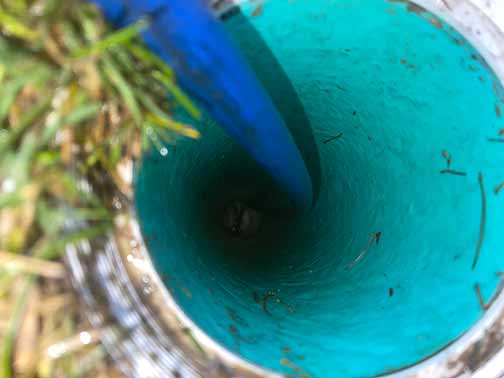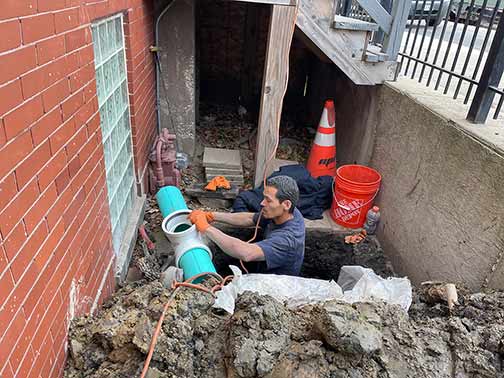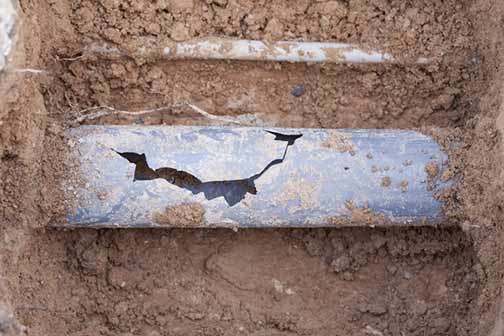Understanding the Causes of Sewer Line Breaks: Identifying Key Factors
Broken sewer lines can be a homeowner’s worst nightmare, leading to expensive repairs and potential health hazards. Understanding the causes of sewer line breaks is crucial in preventing and addressing these issues effectively. Some common causes include aging pipes, tree root intrusion, ground shifting, and improper installation.
Aging pipes are one of the most common causes of sewer line breaks. Over time, pipes can deteriorate and become more susceptible to cracks and leaks. This is especially true for older homes with outdated plumbing systems. Tree root intrusion is another significant cause of sewer line breaks. As trees grow, their roots can extend into sewer lines, causing blockages and damage. Ground shifting, often due to natural disasters or construction activities, can also lead to sewer line breaks. Lastly, improper installation of sewer lines can result in weak points that are prone to breaking.
Recognizing the Symptoms of Broken Sewer Lines: Early Detection is Key
Early detection of a broken sewer line can save homeowners from extensive damage and costly repairs. Recognizing the symptoms of a broken sewer line is key to addressing the problem promptly. Some common symptoms include foul odors, slow drains, unusual sounds, and water damage.
Foul odors coming from drains or the yard are often a sign of a broken sewer line. These odors result from sewage leaking into the ground or backing up into the home. Slow drains are another common symptom, indicating a blockage or break in the sewer line. Unusual sounds, such as gurgling or bubbling noises, can also be a sign of a broken sewer line. Lastly, water damage in the form of puddles, wet spots, or mold growth can indicate a sewer line issue.
Steps to Take When You Suspect a Broken Sewer Line: Immediate Actions
When homeowners suspect a broken sewer line, it is essential to take immediate action to prevent further damage and address the issue efficiently. The following steps can help guide homeowners through the process:
First, contact a professional plumber to inspect the sewer line and confirm the issue. A professional will have the necessary tools and expertise to diagnose the problem accurately. Next, avoid using water fixtures until the issue is resolved to prevent further damage and sewage backup. This includes refraining from using sinks, toilets, and showers. Additionally, clear the area around the suspected break to allow for easy access and prevent further contamination. Finally, follow the plumber’s recommendations for repair or replacement to ensure the issue is addressed effectively.

Preventative Measures to Avoid Sewer Line Breaks: Maintaining a Healthy System
Preventing sewer line breaks is essential for maintaining a healthy and functional plumbing system. Homeowners can take several preventative measures to reduce the risk of sewer line issues. Regular maintenance, proper disposal of waste, and mindful landscaping are all critical factors in preventing sewer line breaks.
Regular maintenance, such as routine inspections and cleanings of your sewer line, can help identify potential issues before they become significant problems. Proper disposal of waste, including avoiding flushing non-biodegradable items and disposing of grease and oil properly, can prevent blockages and damage. Mindful landscaping, such as planting trees and shrubs away from sewer lines, can reduce the risk of root intrusion. Additionally, homeowners should be aware of the location of their sewer lines and avoid heavy construction or excavation in those areas.
Understanding Sewer Line Repair and Replacement Options: Making Informed Decisions
When faced with a broken sewer line, homeowners have several repair and replacement options to consider. Understanding these options can help homeowners make informed decisions and choose the best solution for their specific situation. Some common repair and replacement methods include traditional trenching, trenchless technology, and pipe relining.
Traditional trenching involves excavating the area around the broken sewer line to access and repair or replace the damaged section. While this method is effective, it can be disruptive and costly due to the extensive excavation required. Trenchless technology, such as pipe bursting and pipe lining, offers a less invasive alternative.
Pipe bursting involves breaking the old pipe while simultaneously installing a new one, while pipe lining involves inserting a flexible liner coated with resin into the damaged pipe, which hardens to create a new pipe within the old one. Both methods can be more cost-effective and less disruptive than traditional trenching.
The Importance of Hiring a Professional Plumber: Expertise and Efficiency
Hiring a professional plumber is essential when dealing with a broken sewer line. A professional plumber has the expertise, tools, and experience necessary to diagnose and address the issue effectively. Attempting to repair a broken sewer line without professional assistance can lead to further damage and costly repairs.
Professional plumbers can accurately identify the cause of the sewer line break and recommend the best course of action. They can also ensure that the repair or replacement is performed correctly, reducing the risk of future issues. Additionally, professional plumbers can provide valuable advice on preventative measures and maintenance to keep the plumbing system in optimal condition.

Understanding the Costs Associated with Sewer Line Repairs: Budgeting and Planning
Sewer line repairs can be a significant financial burden for homeowners. Understanding the costs associated with sewer line repairs can help homeowners budget and plan for these expenses. Several factors can influence the cost of sewer line repairs, including the extent of the damage, the repair method, and the location of the sewer line.
The extent of the damage is a primary factor in determining the cost of repairs. Minor repairs, such as fixing small cracks or blockages, can be relatively inexpensive. However, extensive damage requiring full replacement can be costly. The repair method chosen can also impact the cost. Traditional trenching is often more expensive due to the extensive excavation required, while trenchless technology can be more cost-effective. The location of the sewer line can also influence the cost, as lines located in hard-to-reach areas or under structures may require additional labor and resources.
Insurance and Financing Options for Sewer Line Repairs: Financial Assistance
Homeowners facing sewer line repairs may be concerned about the financial burden. Fortunately, there are insurance and financing options available to help cover the costs. Understanding these options can provide homeowners with peace of mind and financial assistance during the repair process.
Homeowners’ insurance policies may cover sewer line repairs, depending on the cause of the damage and the specific policy. It is essential for homeowners to review their insurance policy and contact their insurance provider to determine coverage. Additionally, some insurance companies offer separate sewer line coverage, which can be added to the existing policy for an additional fee.
Financing options, such as personal loans or home equity loans, can also help homeowners manage the cost of sewer line repairs. Many plumbing companies offer financing plans, allowing homeowners to pay for repairs over time. It is essential for homeowners to research and compare financing options to find the best solution for their needs.
The Environmental Impact of Sewer Line Breaks: Protecting the Ecosystem
Sewer line breaks can have significant environmental consequences, affecting both the immediate area and the broader ecosystem. Understanding the environmental impact of sewer line breaks can help homeowners appreciate the importance of timely repairs and preventative measures.
When a sewer line breaks, untreated sewage can leak into the ground, contaminating soil and groundwater. This contamination can harm local plant and animal life and pose health risks to humans. Additionally, sewage leaks can contribute to water pollution, affecting nearby rivers, lakes, and streams. The presence of harmful bacteria and chemicals in the water can disrupt aquatic ecosystems and pose a threat to wildlife.
Addressing sewer line breaks promptly and taking preventative measures can help mitigate the environmental impact. Homeowners should be aware of the potential consequences and prioritize the health of their plumbing system to protect the environment.
Conclusion: Prioritizing Sewer Line Health for Homeowners
Broken sewer lines are a serious issue that every homeowner should be aware of. Understanding the causes, symptoms, and steps to take when a sewer line breaks can help homeowners address the problem efficiently and prevent further damage. Preventative measures, such as regular maintenance and mindful landscaping, can reduce the risk of sewer line breaks. When faced with a broken sewer line, hiring a professional plumber and understanding the repair options and associated costs are essential.
Additionally, homeowners should explore insurance and financing options to manage the financial burden of repairs. By prioritizing the health of their plumbing system, homeowners can protect their property and the environment from the consequences of sewer line breaks.


